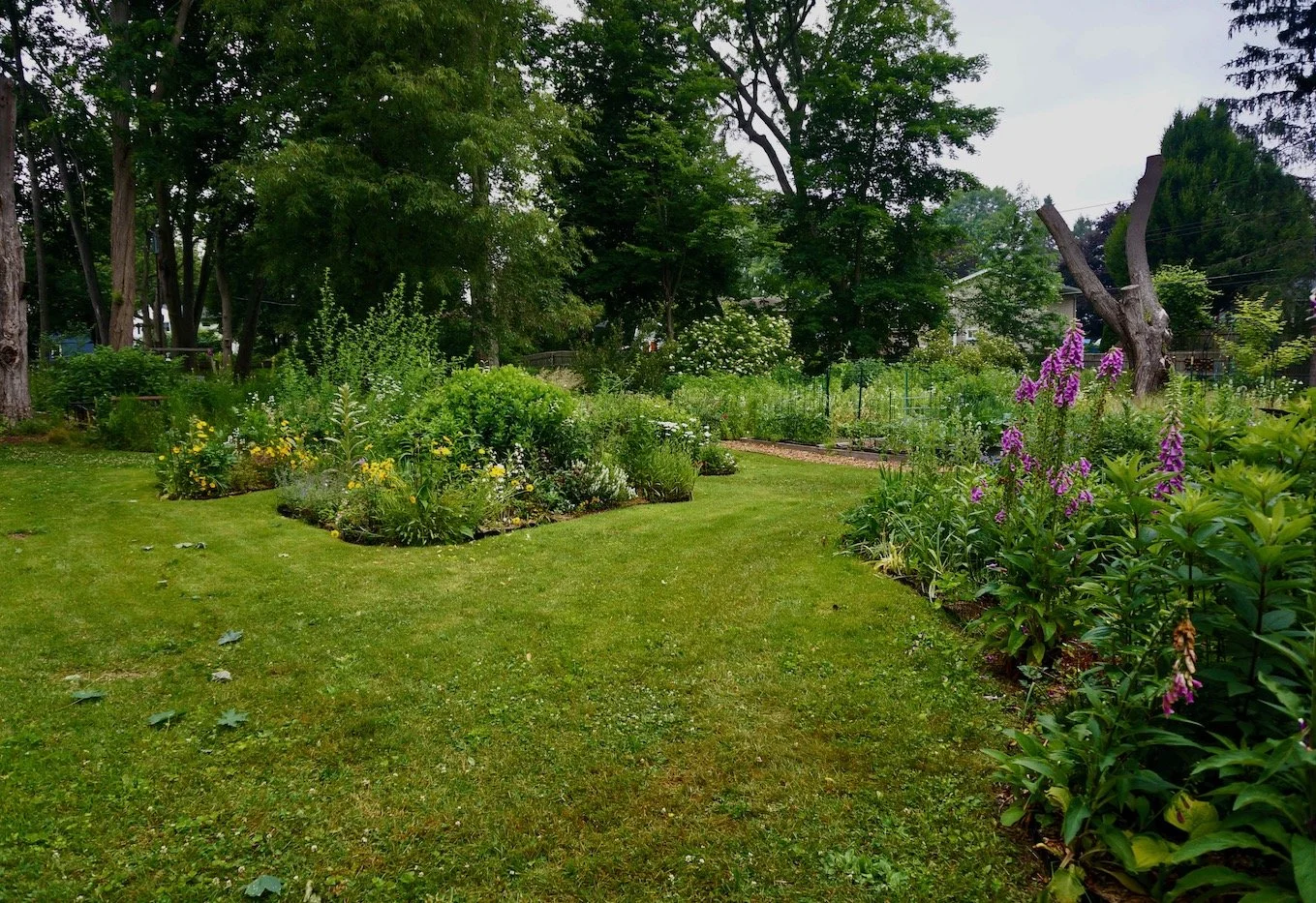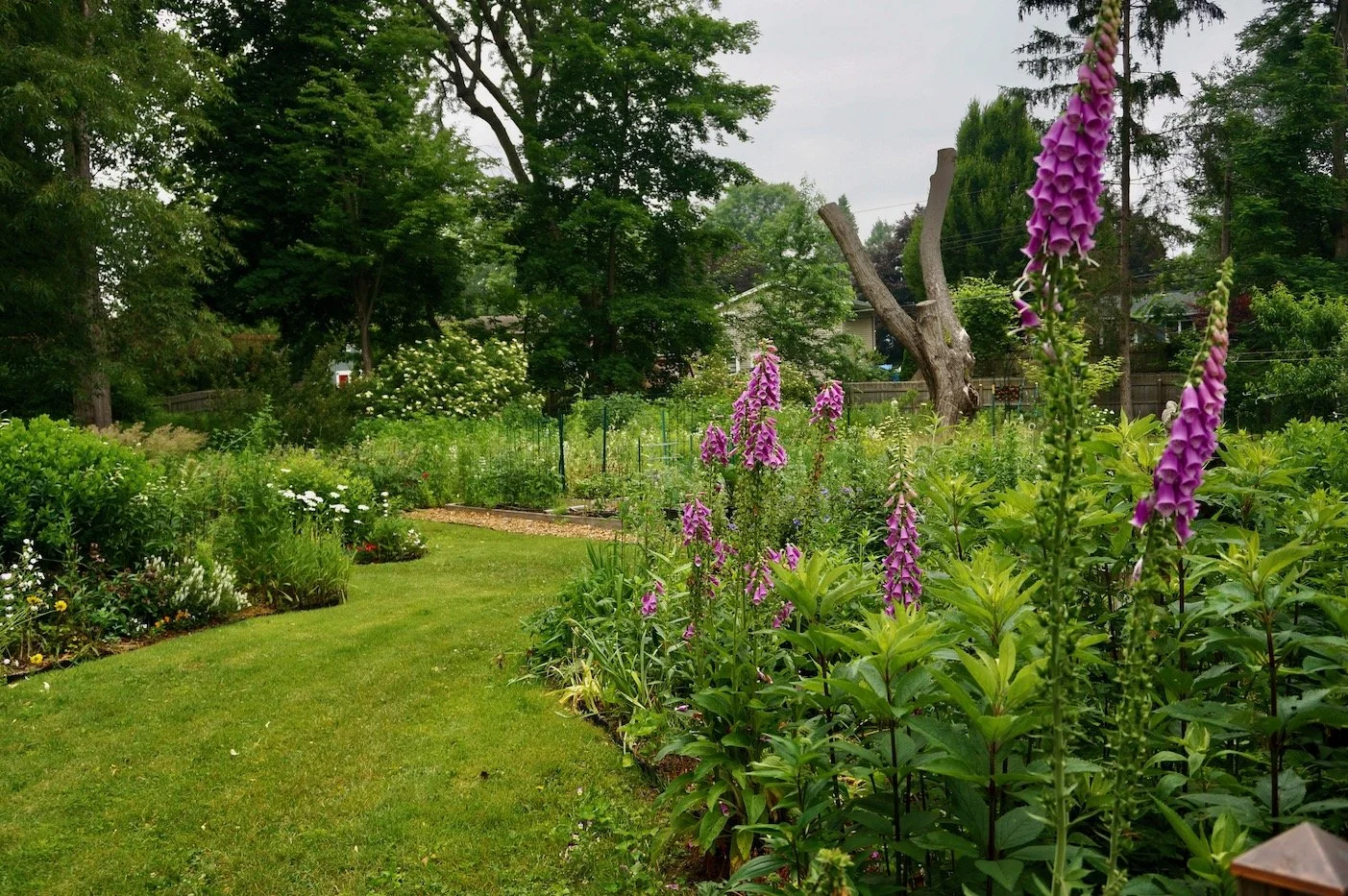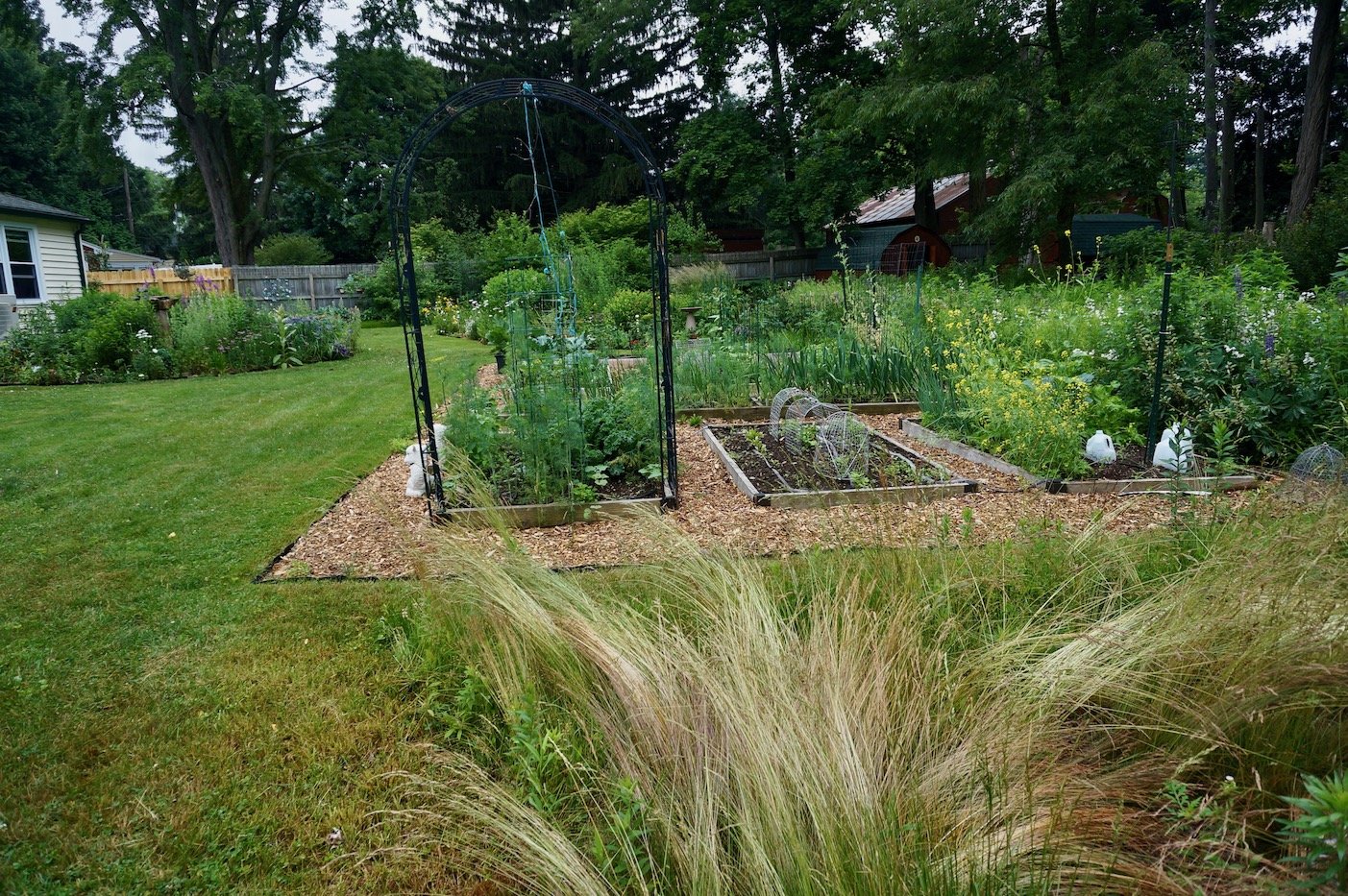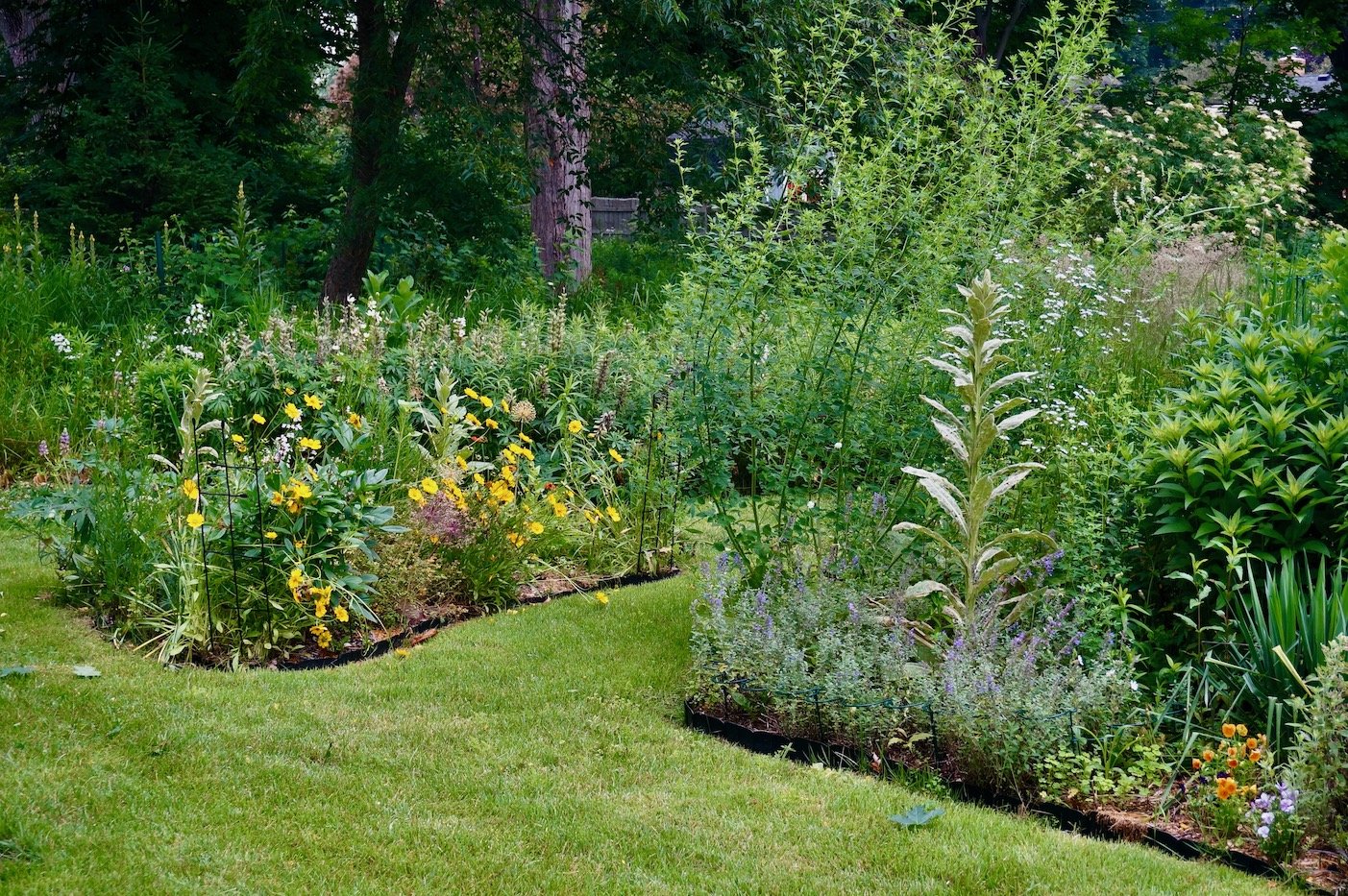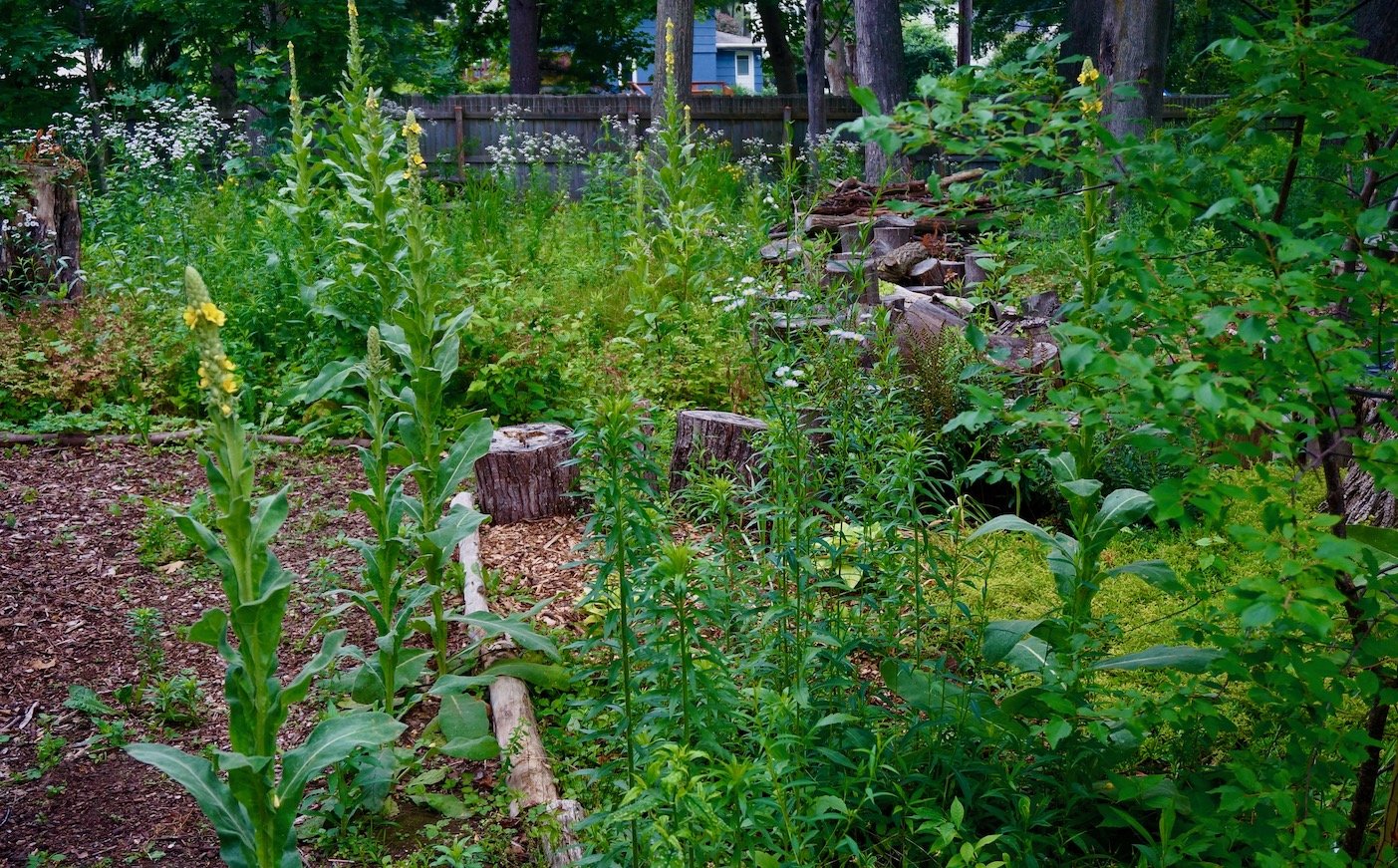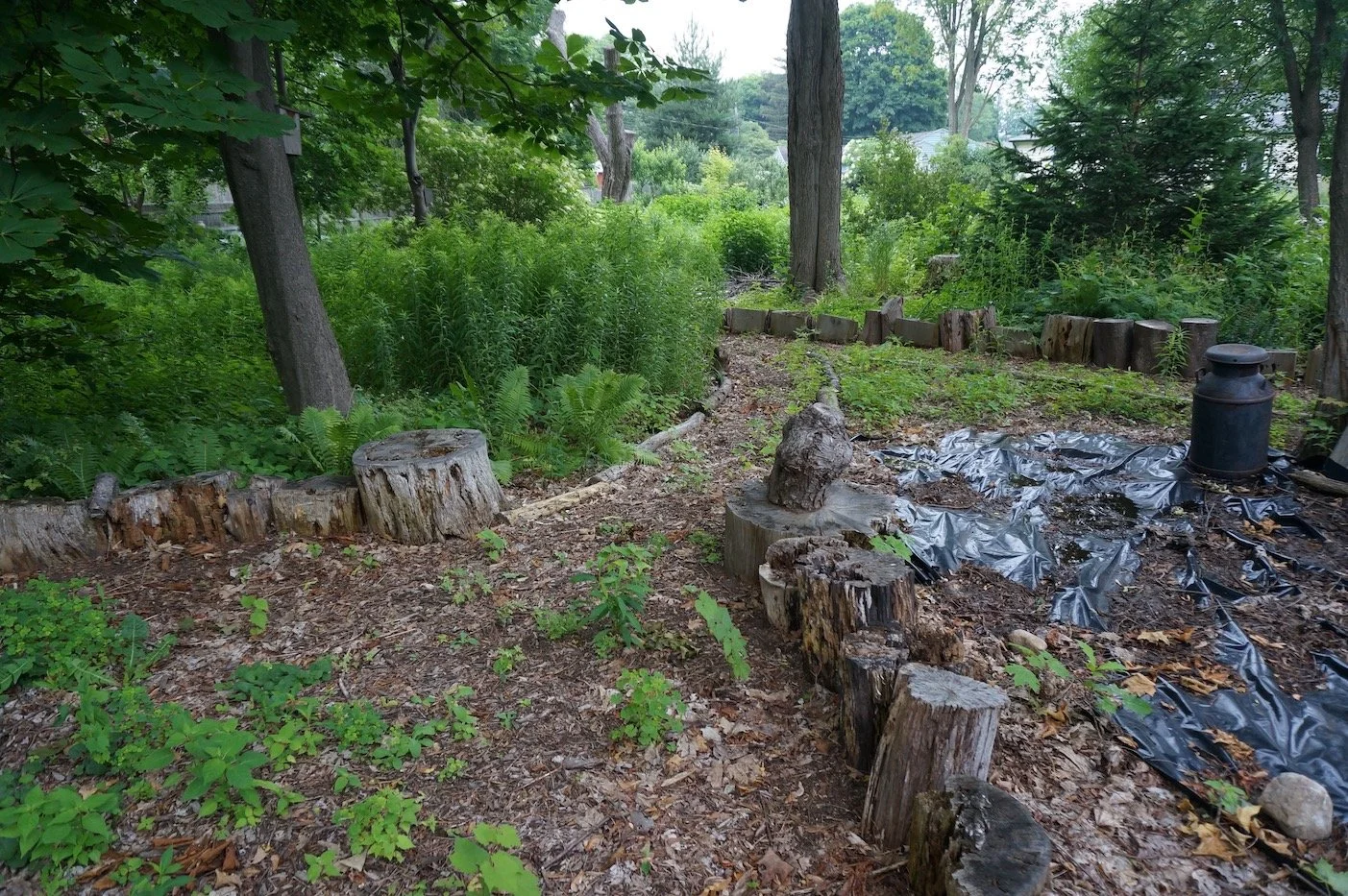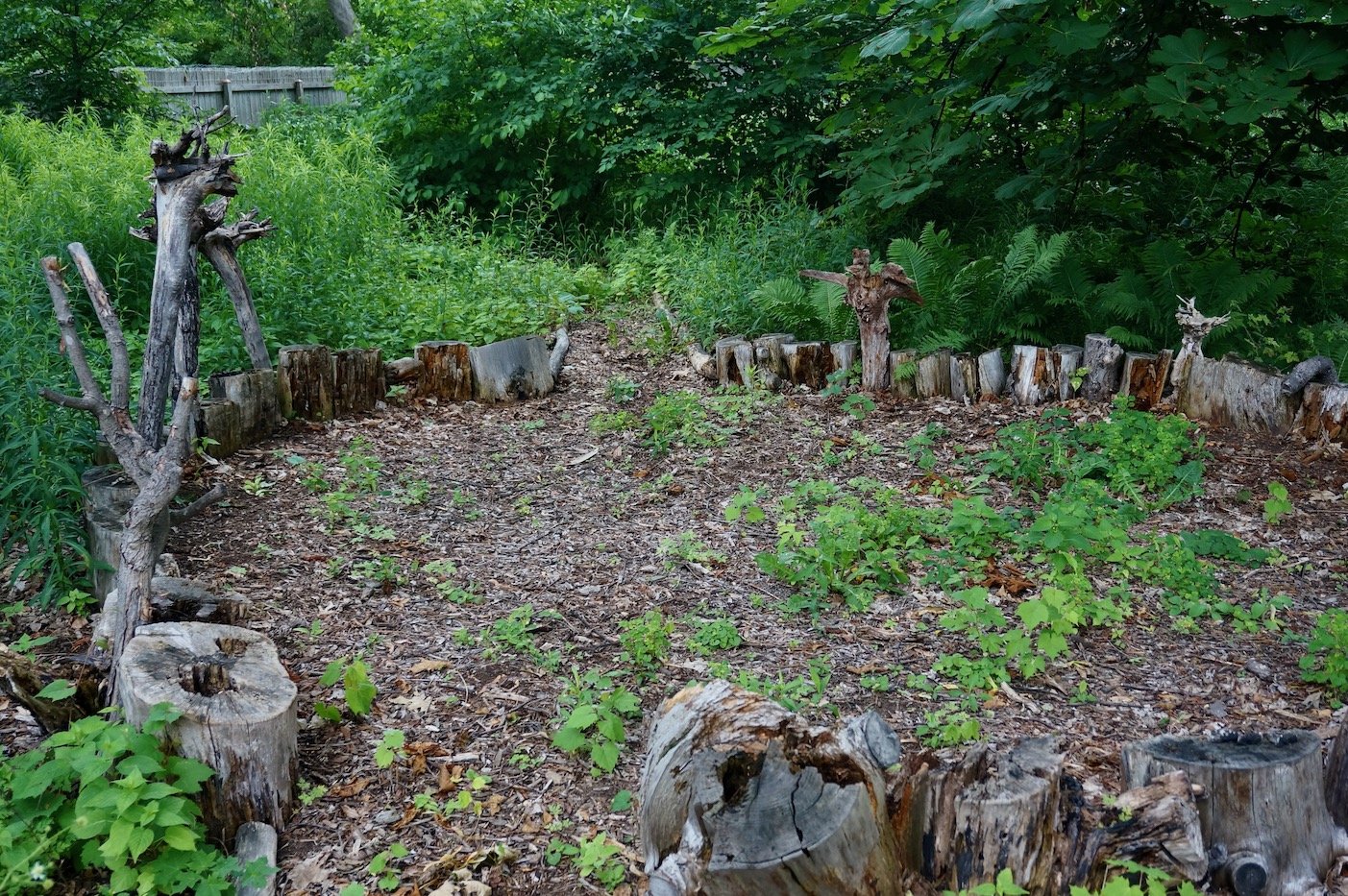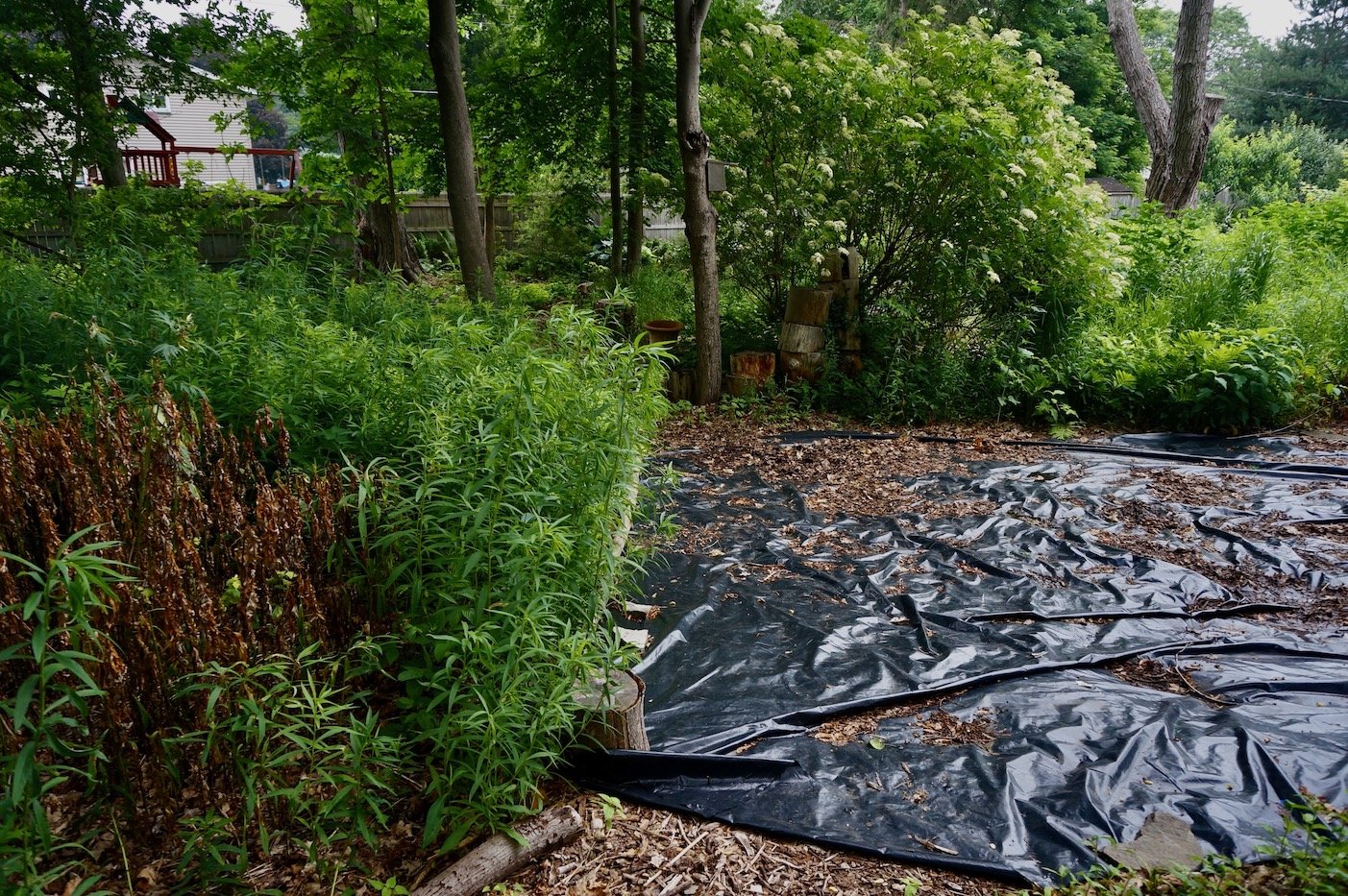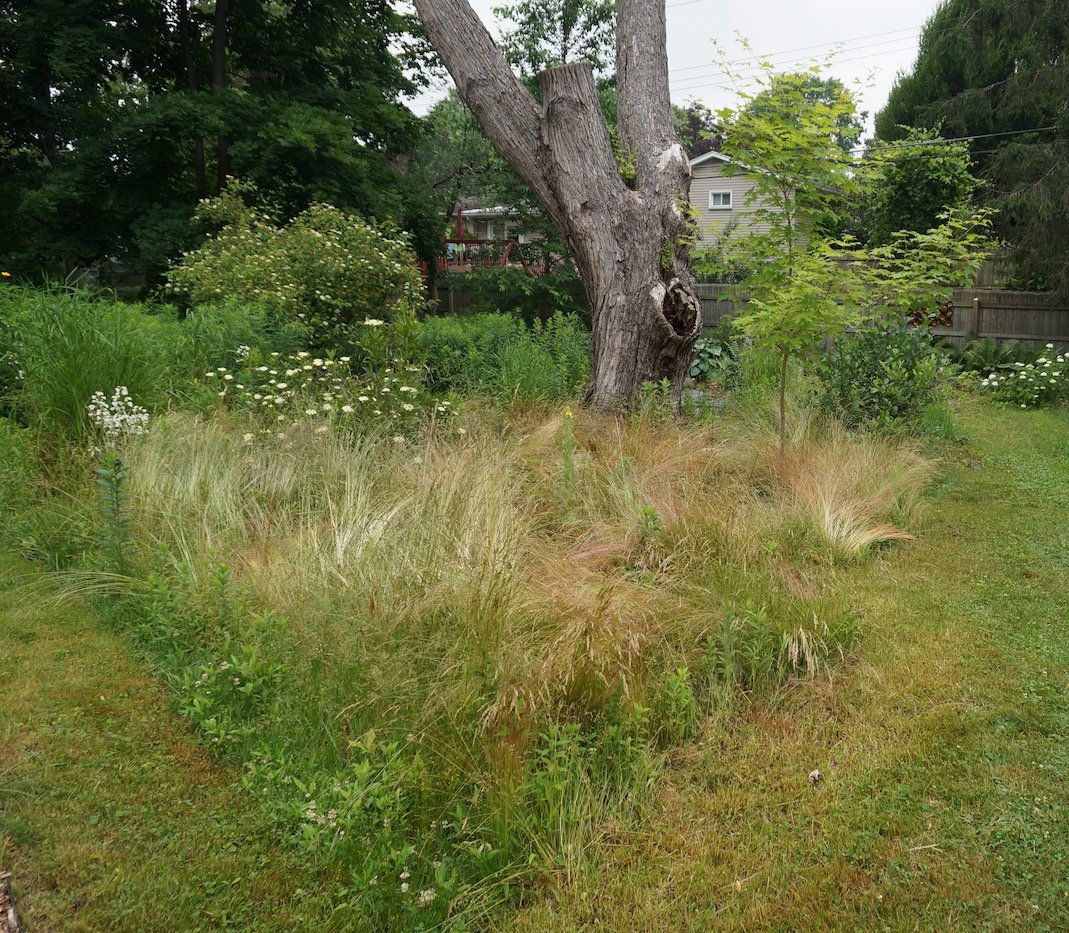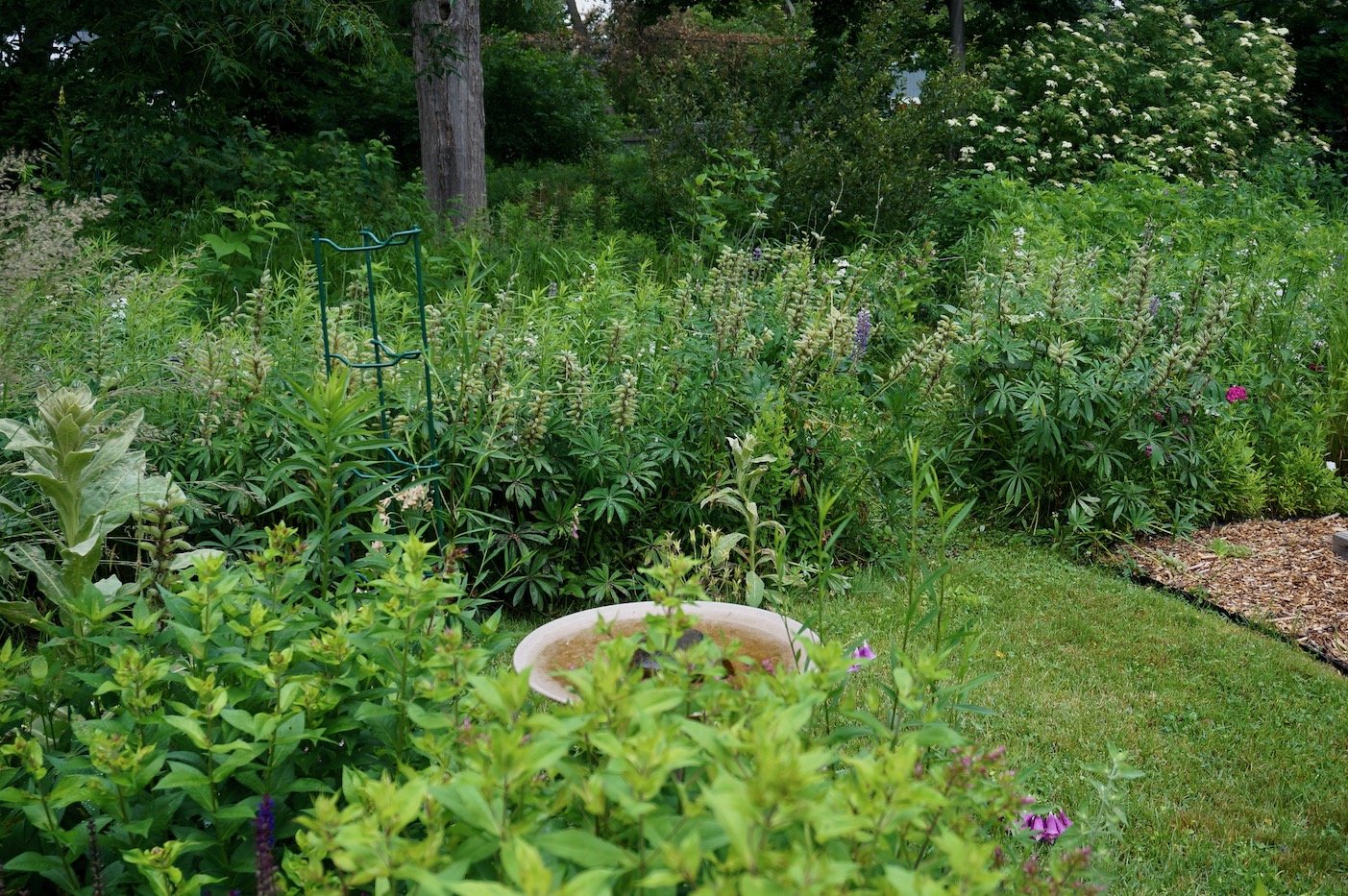Want a new look for your garden? Tips for melding the wild and tame together
From last month’s post about my journey across the pond, you know I was impressed by the ecologically conscious Brits and their landscaping practices. So my ears perked up when a friend complained about the naturalistic look her neighbor was trying out in her front yard - “I like the concept, but it looks so sloppy. If I could figure out how to make it look good in my yard, I’d do it too.” Hmm…I think a lot of us can relate to that.
There are so many questions about how to create a naturalistic landscape - how do you keep it from looking sloppy? What do you to plant to attract pollinators, manage cultivated and uncultivated areas, eliminate invasive plants and so forth? I don’t have all the answers, but my friend Karen’s garden checks a lot of the boxes. In particular, I admired the seamless way cultivated and wild areas are melded together and her method of dealing with invasive plants.
Formulate a plan:
When Karen and her husband Carl moved into their house 12 years ago, the backyard was carpeted with brown, lifeless zoysia grass. They envisioned something more lively - a habitat to nurture birds, insects and pollinators, some kind of meadow, perennial borders and vegetables. Someone designed a landscape plan for them, but in the end it wasn’t very useful other than identifying wet and dry areas. That information helped them to identify plant possibilities. Tuning into Ground Force , a humorous British TV garden makeover show, inspired ideas.
Designation of controlled and wild areas came first. When I asked what gave her the idea to blend the two she laughed and said, “I married a Brit.” According to her, leaving a wild patch was Carl’s idea.
Divide the garden into parts: By doing this, you can decide what can be left to do its thing and areas you want to control more.
These are the cultivated areas:
1. A series of curvaceous beds are packed with a variety of perennials and annuals. Mowed grass paths lead you around and to the back of the property.
2. Vegetable garden and fruit trees are close to the house and deck. These were laid out for ease of maintenance and harvesting.
One of the paths that leads to the wilder section in the below photo. Cultivated gardens are framed by the meadows in the back part of the property.
3. Meadows –This section is devoted to creating a habitat for the birds to raise their young as well as providing food for the pollinators and other critters. The back area of the property has been divided into sections - some wet and others dry.
The first is a heavily shaded spot where Norway maples were cleared to make way for something better. The snags were deliberately left behind for the woodpeckers and other birds.
The logs have been left in place or used to outline pathways, shelter birds and other wildlife.
This whimsical little area made me smile!
The next meadow is a little sunnier, but wetter. It’s a perfect home for native shrubs they continue to add - winterberry, elderberry, witchhazel and more. In the dampest spots, they’ve introduced a variety of ferns, jack in the pulpit, solomon seal and hostas. It’s also filled with native goldenrod - an invasive plant that’s hard to control.
I like Karen’s method. She has found that mowing goldenrod weakens the plant so you can pull it out - this kills the long tendrils that spread. Covering with black plastic kills it, but it takes 2 years before you can plant anything else. She doesn’t want to eliminate it all though - according to entomologist Doug Tallamy, it’s worth its weight in gold. Goldenrod provides food critical to the survival of many insects during their fall migrations. Karen keeps it in check by surrounding it with Pound-In Edging from Gardeners Supply.
In the sunnier drier part of the meadow, she replanted an area with low mow grass and sowed a seed mix of wildflowers.
The recommendation is to mow the grass once a year and weed intermittently until it has a chance to take off. This is what it looks like if it isn’t mowed - interesting little tussocks of grass blend into the other plants.
Initially, wildflower seeds require a bit of care - after that “it’s survival of the fittest,” Karen admits. The lupines have taken over in this section below. She has had the best luck with seed mixes, which she ordered from Ernst Seeds.
Implementing and maintaining a more natural landscape isn’t about doing nothing, it’s more about careful planning and management.
Here are some tips for success:
Cut in fall to spread seed.
Cultivate and encourage more successful flowers and let the rest go.
Create little pocket gardens - places among the chaos.
Weed out invasives on a regular basis.
Ultimately “if you’re going to garden like this, you have to change your vision a bit and make peace with letting go, Karen says. Nurture it, but let it do what it wants to do.”
Plant Sources:
Plants from friends
End of year sales

